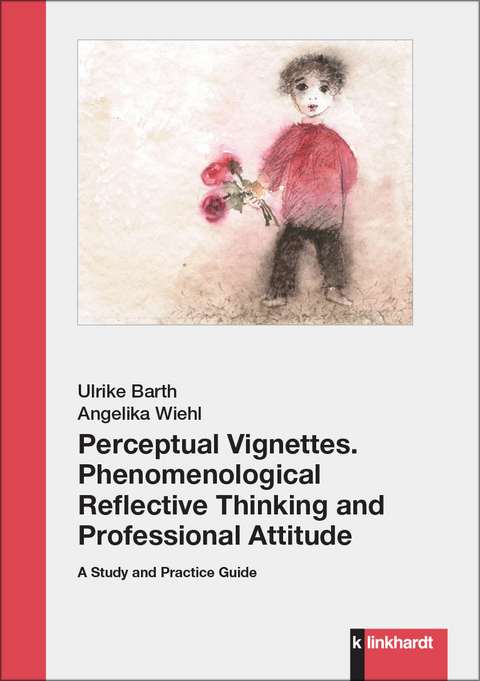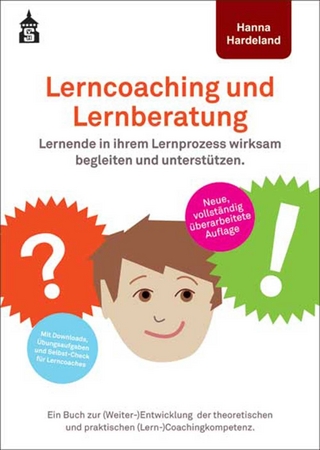
Perceptual Vignettes. Phenomenological Reflective Thinking and Professional Attitude
Verlag Julius Klinkhardt GmbH & Co. KG
978-3-7815-2668-6 (ISBN)
Perceptual vignettes are the result of a phenomenological method applied in pedagogical practice and research. This method includes perception, description and phases of reflection and supports the development of a professional inclusive attitude and diagnostic competence.
The process-based way of working with perceptual vignettes asks us to defer ideal-typical patterns, categorizations of all kinds, judgements and prognoses and to look more closely at each person’s situation.
The book is intended as a study and practice guide and includes theoretical foundations and the practical application of the method as well as themebased exercises in perception, writing and reflection.
Ulrike Barth, PhD, professor for transformativ and inclusive pedagogy at the Institute for Waldorf Education, Inclusion and Intercultural Studies of Alanus University, Mannheim, Germany.
Angelika Wiehl, PhD, lecturer in education studies and Waldorf Education at the Institute for Waldorf Education, Inclusion and Intercultural Studies of Alanus University, Mannheim, Germany.
Preface to the English edition ............................................................................. 9
1 Perceptual vignettes in teacher education. Introduction.............................. 11
Acknowledgements............................................................................................. 16
Part I
Perceptual vignettes as phenomenological method in education
2 Phenomenological-methodological foundations of working
with perceptual vignettes............................................................................... 19
2.1 The ‘things themselves’: phenomenological reduction and givenness
(Husserl, Marion)................................................................................... 23
2.2 The givenness of bodily selfhood in intuition (Husserl, Marion)............. 27
2.3 ‘Being-with’ and bodily existence
(Heidegger, Merleau-Ponty, Böhme)...................................................... 29
2.4 Attention generates horizon (Husserl, Merleau-Ponty, Waldenfels)......... 33
2.5 Understanding and recognition of alienness and otherness
(Heidegger, Husserl, Lévinas, Waldenfels).............................................. 36
2.6 Intentional or misleading empathy? (Fuchs, Breithaupt, Breyer)............. 40
2.7 Goethean phenomenology – a path of development. Excursus............... 42
3 Perception and observation: two phenomenological approaches ................ 47
3.1 Atmosphere as the primary object of perception..................................... 49
3.2 Perception as open, intentional attending with all senses........................ 54
3.3 Observation as attentive turning to the world......................................... 61
3.4 Exercises in perception, observation and thinking ................................. 68
3.5 Perceptual vignettes show traces of attention.......................................... 77
4 Wonder as a phenomenological-pedagogical capacity
of ‘being-with’ ............................................................................................... 81
4.1 Everyday wonder in the work with perceptual vignettes......................... 83
4.2 Philosophical excursus: wonder is beginning ......................................... 90
4.3 Wonder and alienation in children......................................................... 93
4.4 Widening the pedagogical horizon with wonder .................................... 98
4.5 Wonder precedes knowledge. An outlook ............................................ 100
5 Writing perceptual vignettes – a creative phenomenological method ....... 104
5.1 ‘I examined the writing’....................................................................... 105
5.2 Problems and system of phenomenological description........................ 107
5.3 Perceptual vignettes as body-oriented
phenomenological descriptions............................................................. 111
5.4 Do phenomenology and creativity contradict
or complement each other?................................................................... 113
5.5 Using the four-stage model for the phenomenological,
creative writing of perceptual vignettes................................................. 118
5.6 Variations of phenomenological texts:
phenomenological descriptions, vignettes, anecdotes,
memory pictures and perceptual vignettes ........................................... 124
5.7 Writing perceptual vignettes ................................................................ 130
Part II
Using perceptual vignettes in (special needs) education
6 Developing a professional pedagogical attitude ........................................ 135
6.1 Attitude – habitus – beliefs – ethos ...................................................... 136
6.2 Beliefs versus attitude .......................................................................... 140
6.3 Professional attitude in (special needs) education ................................. 141
6.4 Professional pedagogical attitude and inclusion ................................... 144
6.5 Professionalizing pedagogical attitude .................................................. 147
6.6 Exercises for developing pedagogical ethos .......................................... 150
7 Perceptual vignettes as media of reflection ................................................. 161
7.1 Reflection in the discourse on education ............................................. 162
7.2 Reflective capacity vs reflective competence/reflexivity ......................... 164
7.3 Excursus: from analysis to synthesis ..................................................... 165
7.4 Preliminary conclusion and starting point for our actions .................... 167
7.5 Implications for training or teacher education ..................................... 167
7.6 Excursus: a working model based on biographical theory .................... 170
7.7 Levels of reflection with perceptual vignettes ....................................... 170
7.8 The reflection spiral of the perceptual vignette method ........................ 173
7.9 Examples of reflective processes ........................................................... 174
7.10 Excursus: phenomenology in relation to inclusion
and exclusion – ableism ....................................................................... 184
7.11 Reflection in training: outlook ............................................................. 186
8 Perceptual vignettes in preparatory exercises
for diagnostic competence........................................................................... 188
8.1 Diagnostic competences in transition..................................................... 188
8.2 Sympathetic diagnosis vs categorization.................................................. 192
8.3 Perceptual vignettes complementing the ‘child conference’..................... 195
8.4 Phenomenology in diagnosis.................................................................. 197
8.5 Perceptual vignettes as a medium of sympathetic diagnosis..................... 198
8.6 Exercises in pedagogical diagnosis........................................................... 200
8.7 The potential of perceptual vignettes in pedagogical diagnosis.
Outlook ................................................................................................ 211
9 Perceptual vignettes for innovative professionalism in education.
Outlook ....................................................................................................... 213
Indices .............................................................................................................. 221
Quoted perceptual vignettes and other descriptive texts................................. 221
Bibliography.................................................................................................. 223
The authors ...................................................................................................... 243
| Erscheinungsdatum | 01.10.2024 |
|---|---|
| Verlagsort | Bad Heilbrunn |
| Sprache | englisch |
| Maße | 148 x 210 mm |
| Themenwelt | Sozialwissenschaften ► Pädagogik ► Erwachsenenbildung |
| Sozialwissenschaften ► Pädagogik ► Schulpädagogik / Grundschule | |
| Schlagworte | ability to reflect • Anthroposophy • curative education • Education • Empathy • Goethean phenomenology • Inclusion • pedagogical ethos • perception • Phenomenology • Professionalisation • Teacher Education • teacher training |
| ISBN-10 | 3-7815-2668-2 / 3781526682 |
| ISBN-13 | 978-3-7815-2668-6 / 9783781526686 |
| Zustand | Neuware |
| Informationen gemäß Produktsicherheitsverordnung (GPSR) | |
| Haben Sie eine Frage zum Produkt? |
aus dem Bereich


